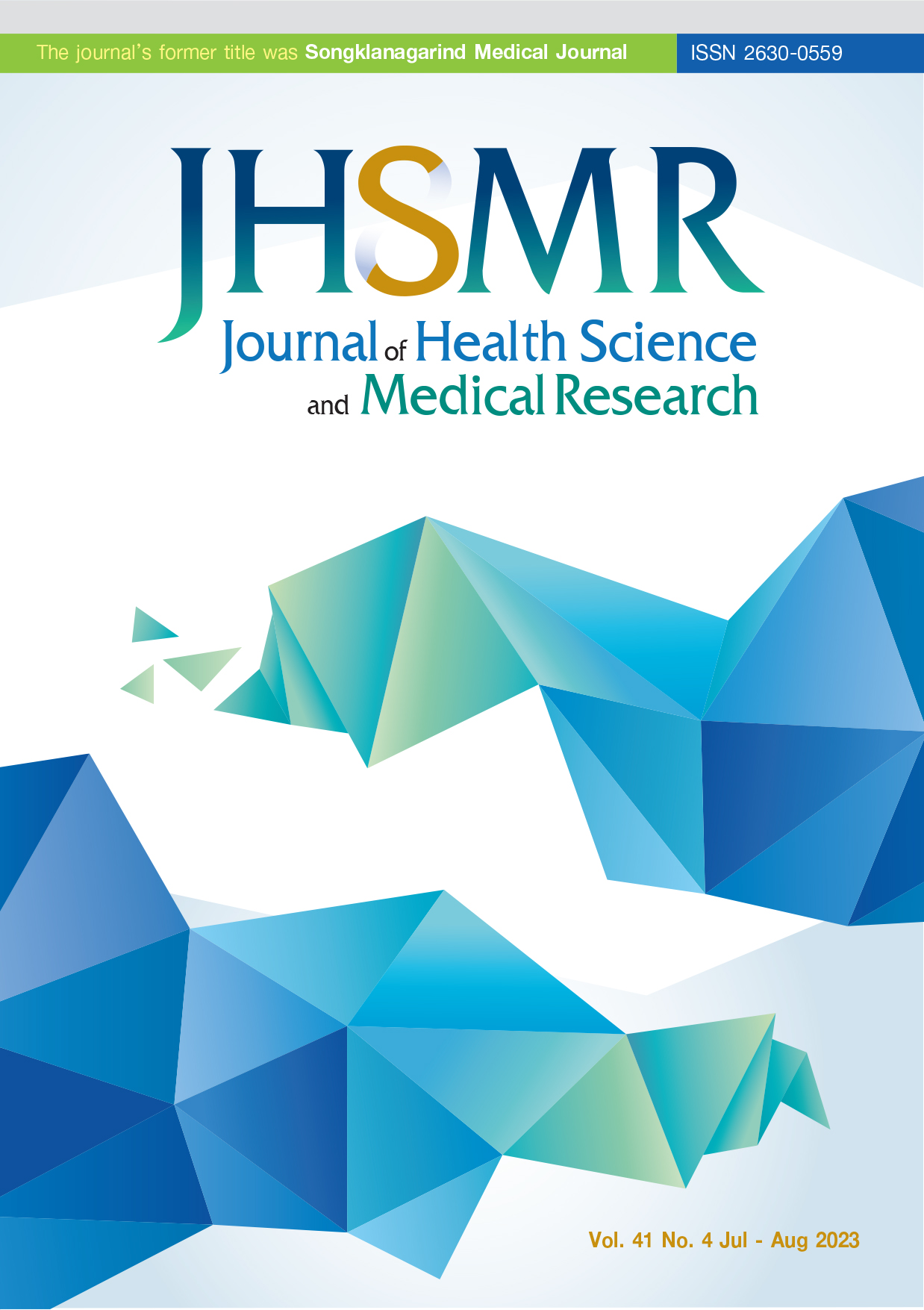Correlation between the Clinical Course of CRMO Lesions and the Imaging Characteristics on Follow-up MRIs
DOI:
https://doi.org/10.31584/jhsmr.2023929Keywords:
bone marrow edema, chronic recurrent multifocal osteomyelitis, clinical correlation, CRMO, MRIAbstract
Objective: To evaluate the correlation between the clinical course of chronic recurrent multifocal osteomyelitis (CRMO) lesions and their imaging characteristics on follow-up MRIs.
Material and Methods: Two musculoskeletal fellowship-trained radiologists retrospectively reviewed the initial and follow-up MRI images of 9 CRMO patients who were treated in our institution from 2008 to 2018. Evaluation of clinical course was based on symptomatology, lab results and physical examination and was compared to MRI findings, on follow-up MRIs.
Results: Thirty-five CRMO lesions in 9 patients were identified. Patient’s ages ranged from 4 to 15 years with a mean age of 10 years (S.D.±3.22). Six of the 9 patients were female. Only 21 of 35 lesions had been longitudinally followed by MRI. Of the 39 follow-up MRI exams, there was clinical improvement 15 times, and 24 times there was no clinical improvement confirmed by the clinician. Three MRI features: 1) bone marrow edema (BME) size, 2) BME signal intensity and 3) periosteal edema, significantly correlated with the clinical course (p-value<0.001). When there was the improvement of all these three findings, the correlation with clinical improvement was high with 80% sensitivity and 100% specificity. The area under the receiver operator characteristic curve was 0.90 (95% confidence interval 0.795-1.005). Fourteen silent clinical lesions were also identified.
Conclusion: Bone marrow edema and periosteal edema correlated best with the clinical course of CRMO patients on follow-up MRIs.
References
Costa-Reis P, Sullivan KE. Chronic recurrent multifocal osteomyelitis. J Clin Immunol 2013;33:1043–56.
Khanna G, Sato TSP, Ferguson P. Imaging of chronic recurrent multifocal osteomyelitis. RadioGraphics 2009;29:1159–77.
von Kalle T, Heim N, Hospach T, Langendörfer M, Winkler P, Stuber T. Typical patterns of bone involvement in whole-body MRI of patients with chronic recurrent multifocal osteomyelitis (CRMO). ROFO Fortschr Geb Rontgenstr Nuklearmed 2013;185:655–61.
Surendra G, Shetty U. Chronic recurrent multifocal osteomyelitis: A rare entity. J Med Imaging Radiat Oncol 2015;59:436–44.
Falip C, Alison M, Boutry N, Job-deslandre C, Cotton A, Azoulay R, et al. Chronic recurrent multifocal osteomyelitis (CRMO): a longitudinal case series review. Pediatr Radiol 2013;43:355–75.
Voit AM, Arnoldi AP, Douis H, Bleisteiner F, Jansson M, Reiser M, et al. Whole-body magnetic resonance imaging in chronic recurrent multifocal osteomyelitis: clinical longterm assessment may underestimate activity. J Rheumatol 2015;42:1455–62.
McHugh ML. Interrater reliability: the kappa statistic. Biochem Med (Zagreb) 2012;22:276-82.
Felson DT, Chaisson CE, Hill CL, Totterman SM, Gale ME, Skinner KM, et al. The association of bone marrow lesions with pain in knee osteoarthritis. Ann Intern Med 2001;134:541–9.
Berkowitz YJ, Greenwood SJ, Cribb G, Davies K, Cassar Pullicino VN. Complete resolution and remodeling of chronic recurrent multifocal osteomyelitis on MRI and radiographs. Skeletal Radiol 2018;47:563–8.
Tronconi E, Miniaci A, Baldazzi M, Greco L, Pession A. Biologic treatment for chronic recurrent multifocal osteomyelitis: report of four cases and review of the literature. Rheumatol Int 2018;47:563-8.
Li C, Sun X, Cao Y, Xu W, Zhang W, Dong Z. Case report: remarkable remission of SAPHO syndrome in response to Tripterygium wilfordii hook f treatment. Medicine (Baltimore) 2017;96:e8903.
Piazzolla A, Solarino G, Lamartina C, Giorgi SD, Bizzoca D, Berjano P, et al. Vertebral bone marrow edema (VBME) in conservatively treated acute vertebral compression fractures (VCFs): evolution and clinical correlations. Spine 2015;40:E842- 8.
Koo KH, Ahn IO, Kim R, Song HR, Jeong ST, Na JB et al. Bone marrow edema and associated pain in early stage osteonecrosis of the femoral head: prospective study with serial MR images. Radiology 1999;213:715–22.
Starr AM, Wessely MA, Albastaki U, Pierre-Jerome C, Kettner NW. Bone marrow edema: pathophysiology, differential diagnosis, and imaging. Acta Radiol Stockh Swed 1987 2008;49:771–86.
Damasio MB, Magnaguagno F, Stagnaro G. Whole-body MRI: non-oncological applications in paediatrics. Radiol Med (Torino) 2016;121:454–61.
Fritz J. The contributions of whole-body magnetic resonance imaging for the diagnosis and management of chronic recurrent multifocal osteomyelitis. J Rheumatol 2015;42:1359–60.
Downloads
Published
How to Cite
Issue
Section
License

This work is licensed under a Creative Commons Attribution-NonCommercial-NoDerivatives 4.0 International License.
























